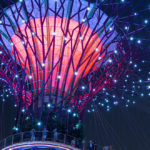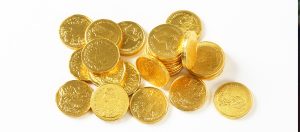Did you watch “Crazy Rich Asians” last weekend?
I’ve been bombarded by questions about the movie. Some asked if it was Asian enough in my books. Some asked if I approve of the lead actor being only half-Asian. Some asked me to explain the rather-complex mahjong scene.
But one question stood out. A friend of mine asked with high skepticism:”Is Singapore really that rich as it is in the movie?”
So, let’s talk about what Singapore is like in real life.
- The 6th most millionaire-dense country in the world:
- According to WealthInsight,1 In 34 people in Singapore is a millionaire. It has built itself a reputation as one of the Asia’ most powerful financial centers. For decades, the country is known for its most business-friendly regulations around the world. It has enjoyed steady economic growth and political stability, boasting the 11th highest GDP per capita in the world in 2017. More than 90% of Singapores own their homes, one of the highest home-ownership rates in the world.
- Luxury is the standard:
- Singapore is the epic-center of luxury. From world’s best airport to world’s largest infinity pool, from lavish shopping attractions to an abundance of Michelin-starred restaurants, there is no shortage of lavish extravagance. While the old money was mostly entrepreneur in the past, luxury is no longer an aspiration fro the second and third generation in Singapore. The modern culture has a massive emphasis on indulgence and collecting experiences.
- One of the world’s greenest cities:
- According to the Environmental Performance Index, Singapore ranks #1 in Asia on their environmental health and ecosystem vitality. Nearly half of Singapore’s land area is under green cover. This is unthinkable in Asia with a population-dense urban environment full of skyscrapers. In a short span of 50 years, Singapore has transformed itself with innovative designs of cascading vertical gardens, verdant walls, green roofs throughout the country. With strict real estate laws and construction codes that mandate green coverage, Singapore has became a pioneer in urban farming and rooftop gardens.
- Singlish on the rise:
- Singlish is short for colloquial Singaporean English. It is a fascinating product of Singapore’s multiculturalism. The language is a collection of catchphrases and vocabularies from English, Malay, Hokkien, Cantonese and other Asian languages. Singlish is often seen as a casual language, compared to using English in formal occasions. Despite government’s continuous effort in the “Speak Good English” campaign, use of Singlish is still dominant in Singapore.
- Not a melting pot, but a crossroad for different cultures
- “Singapore is not a melting pot, but a society where each race is encouraged to preserve its unique culture and traditions, and appreciate and respect that of others,” said Prime Minister Lee Hsien Loong. Singapore’s unique approach to diversity has created a fascinating identity for the country. Historically, it had a wide range of immigrants from China, Malaysia, India and parts of Europe. Not only are customs and traditions from different ethnicities preserved here in Singapore, you can also easily spot their influences on everything from architecture to food. It is truly a country all about integration, instead of assimilation.
To many Americans, Singapore has been most famous for its usage of caning as a legal corporal punishment from the Michael Fay story in the 90s. But now, you’ve learnt what a fascinating country Singapore is.
If you are looking for the next vacation spot, Singapore should definitely be on the list! Or, you can just watch Crazy Rich Asians again to relive the country’s extravagance. 🙂







